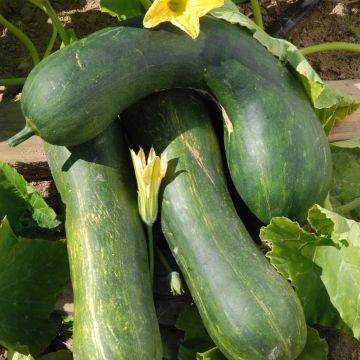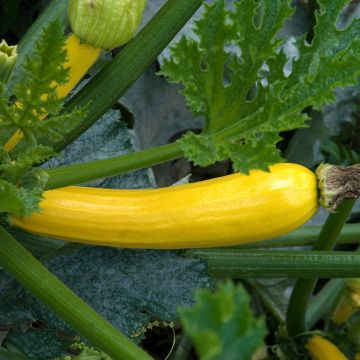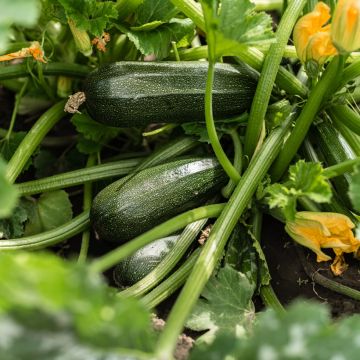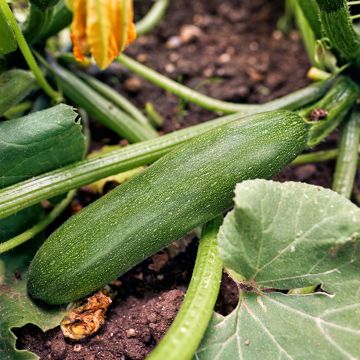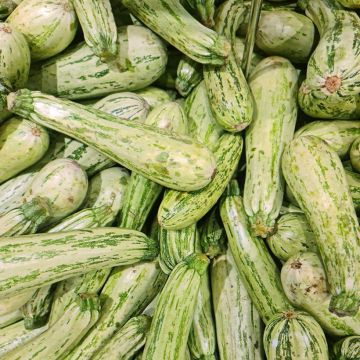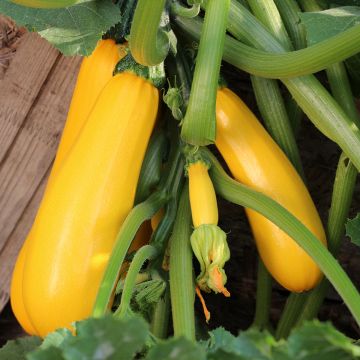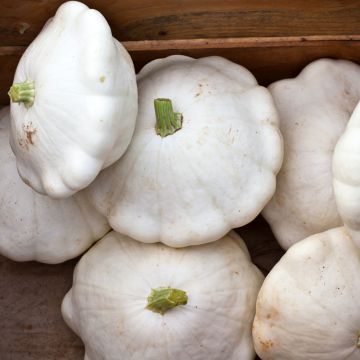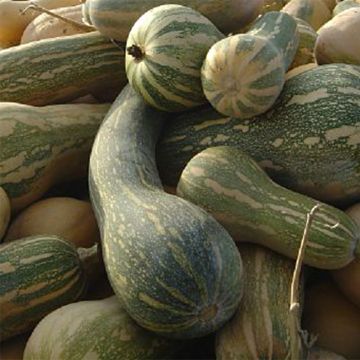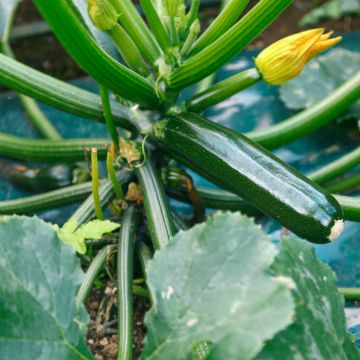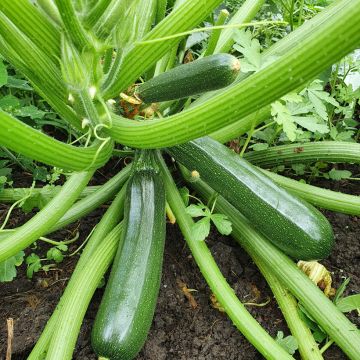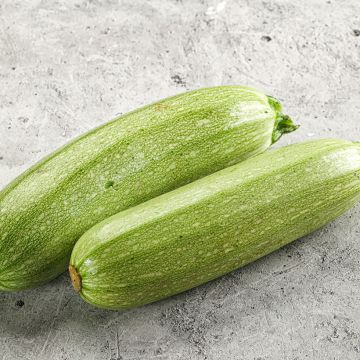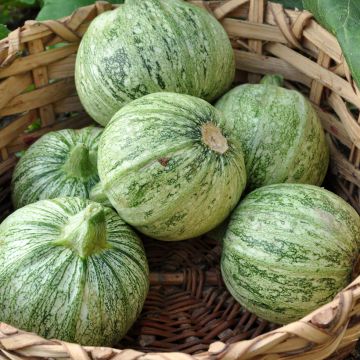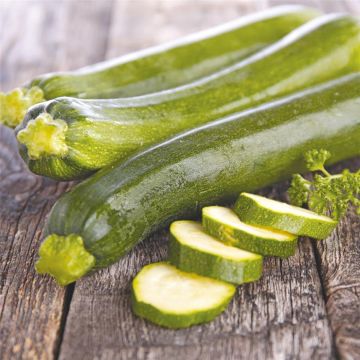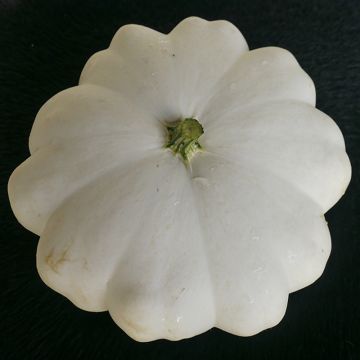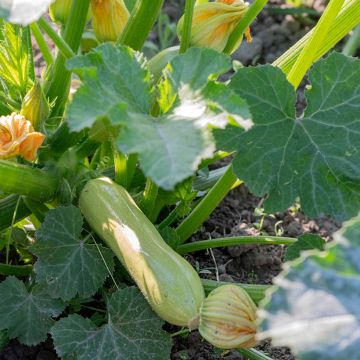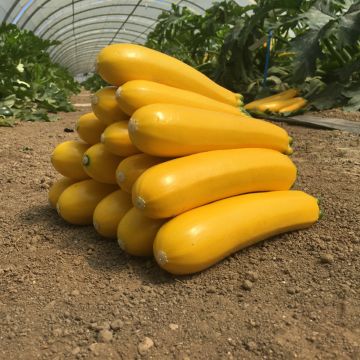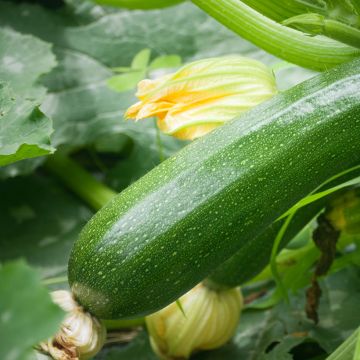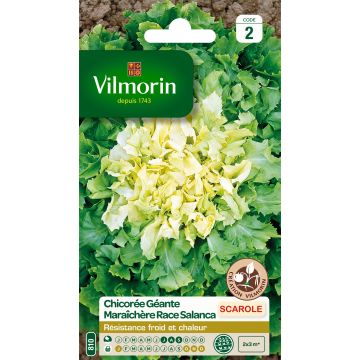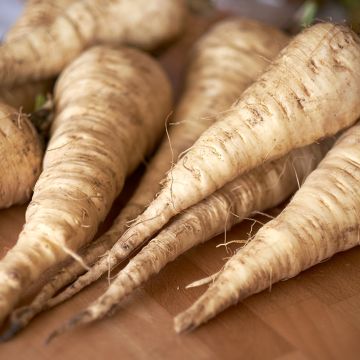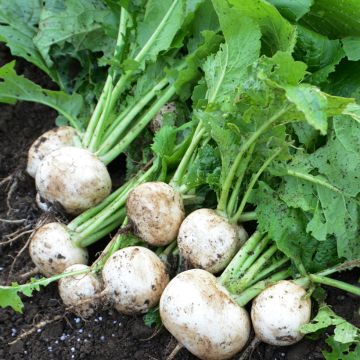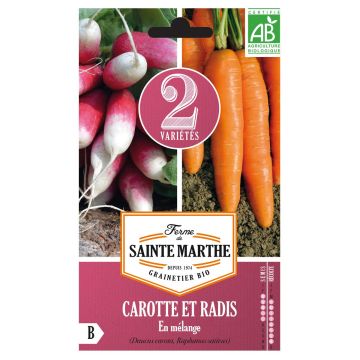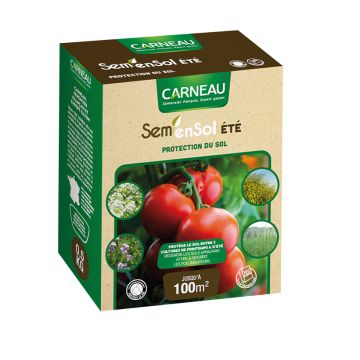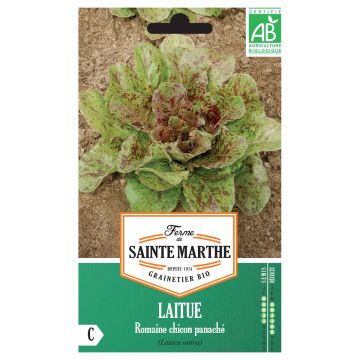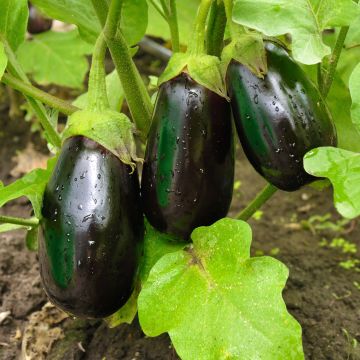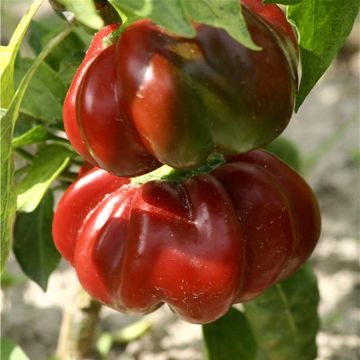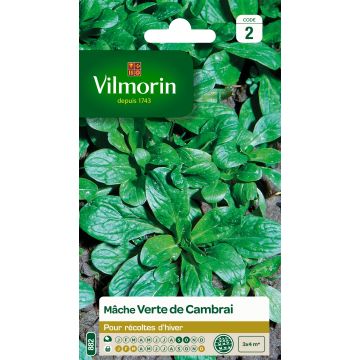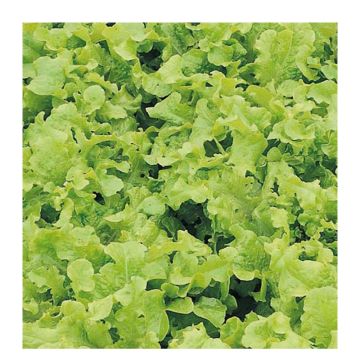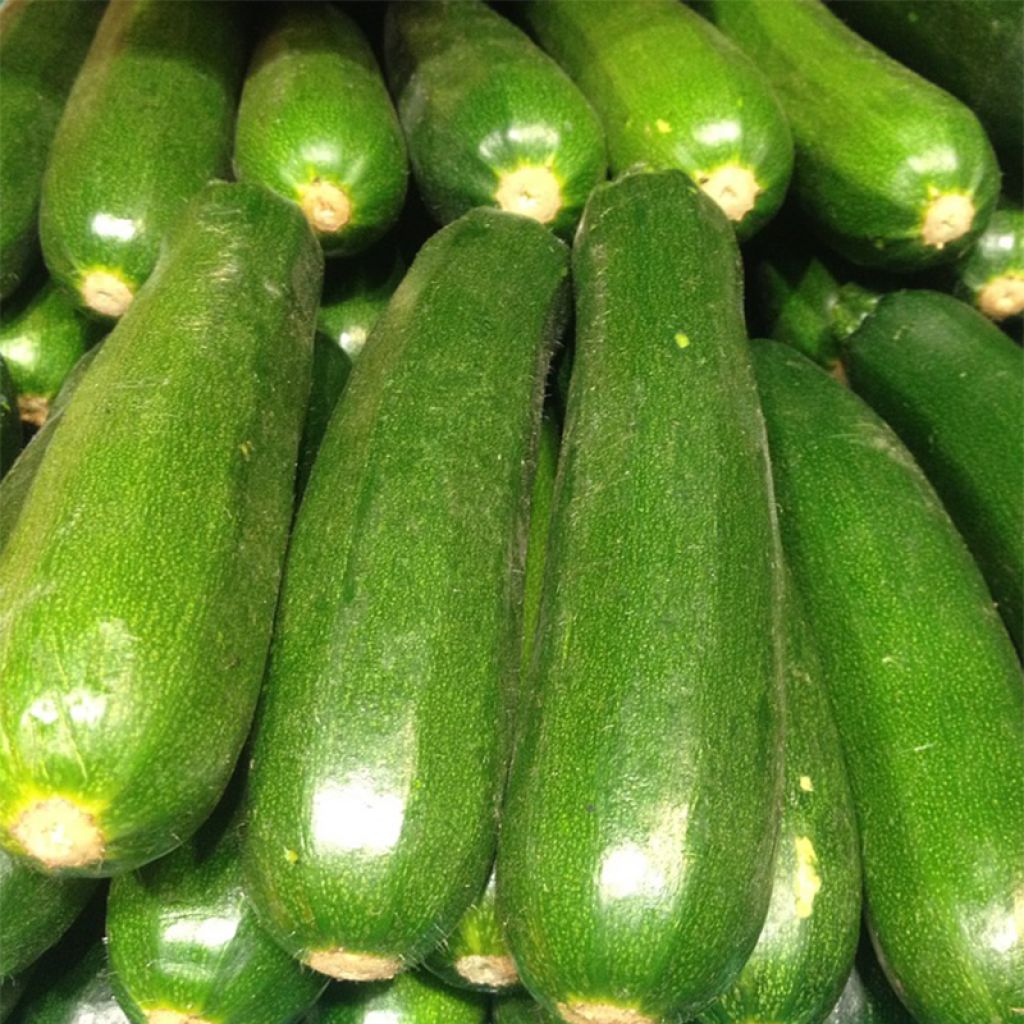

Zucchini Diamant F1 - Cucurbita pepo
Zucchini Diamant F1 - Cucurbita pepo
Cucurbita pepo Diamant
Zucchini, Summer Squash
I left a review on 27/03/2019, writing "tomatoes"! It is actually about the diamond courgette. Very productive if picked regularly. Vigorous plant requiring plenty of space. Be careful, it is a potassium and phosphorus-hungry plant....
Christianne, 12/06/2019
Why not try an alternative variety in stock?
View all →This plant carries a 6 months recovery warranty
More information
We guarantee the quality of our plants for a full growing cycle, and will replace at our expense any plant that fails to recover under normal climatic and planting conditions.
Seed-only orders are dispatched by sealed envelope. The delivery charge for seed-only orders is €3.90.

Description
The 'Diamond' Squash is a non-vining variety consumed in the summer when the fruits are still immature. It produces numerous fruits with dark green and glossy skin. Of excellent taste, it can be eaten raw with a drizzle of olive oil or cooked in ratatouilles, gratins, soups, etc. All kinds of herbs enhance it. The male flowers are excellent when deep-fried. Early and prolific in fruit production, the 'Diamond' Squash is sown from March to June and harvested from July to November.
NB: this variety is marked with the F1 label for "F1 hybrid" as it results from the cross-breeding of carefully selected parents to combine their qualities. This results in a variety that can be particularly tasty and/or early while also being resistant to certain diseases. Sometimes criticised or wrongly associated with GMOs, F1 hybrid seeds are interesting both for their uniformity and their resistance, but unfortunately, their qualities do not pass on to the next generations, so it will not be possible to save the seeds for future sowing.
From orange, green, red, yellow, and black to even blue, smooth, ribbed, warty, with tender skin, etc., squashes and courgettes offer an astonishing variety of shapes, colours, and sizes because they readily hybridise. That is why there are so many different varieties.
In common language, winter squash refers to pumpkins and other squashes with tough skin and delicately sweet flesh. On the other hand, summer squashes or courgettes refer to the different varieties harvested while still young and have tender skin. The latter are consumed with the seeds.
They all originate from America and belong to the large family of cucurbits. They were introduced to Europe in the 16th century.
- There are about ten species of squashes, with four being the most cultivated in our vegetable gardens. These are Curcurbita pepo, Curcurbita moschata or winter squashes, Curcurbita maxima, and finally Curcurbita argyrosperma.
- Curcurbita pepo: these are the most common in vegetable gardens and include certain pumpkins, courgettes, pattypan squashes, etc. They are generally recognised by their rigid and lobed leaves and angular peduncle with at least five ribs that do not widen at the insertion point on the fruit.
- Curcurbita moschata or winter squashes: they have soft leaves. The peduncle is heavily ribbed and visibly widens at the point of fruit insertion. The leaves are heart-shaped.
- Curcurbita maxima: these are mainly pumpkins. Their peduncle is rounded and becomes somewhat spongy. As the name of the species suggests, it mainly concerns varieties with large fruits. The leaves have five lobes.
- Curcurbita argyrosperma: very rarely found in our gardens, they have trilobed leaves and a thick, robust, and non-ribbed peduncle.
Generally trailing, they cling to any support with their tendrils. Female flowers can be distinguished from male flowers by their inferior ovary (below the flower), which resembles an embryo of a fruit. In many regions, male flowers are harvested just after pollination to be stuffed or made into fritters. There are many ways to consume squash and courgette. They can be sautéed, fried, baked, made into gratins, soups, or stuffed. Courgettes are a key ingredient in Provençal ratatouille, Italian caponata, couscous, and many other Mediterranean dishes.
Harvest: Pumpkins should preferably be harvested when ripe unless there is a risk of rotting. In that case, they can finish ripening indoors. Courgettes are harvested when young and fresh, still immature. All should be handled carefully and free from any cuts or bruises.
Storage: Courgettes can be cut into pieces and frozen for storage. Their delicate skin is not suitable for storage as is. Winter squash with tough skin can be stored for several months and consumed throughout the winter. Unlike other fruits and vegetables, they need warmth for optimal storage. There is no need to store them in a dark place, so you might as well keep them where their plump silhouette can be appreciated.
Gardener's tip: Place a slate or roof tile under the fruit. It will no longer be in direct contact with the ground, thus avoiding rotting due to moisture. Similarly, they particularly like slightly moist soils. Consider mulching around the plants, especially during the peak of summer. Pumpkins and courgettes are very susceptible to powdery mildew (a fungal disease that leaves a white fuzz on the surface of leaves). Be careful not to water the leaves or flowers. Pair your pumpkins with alliums like chives, onions, shallots, or legumes like beans or peas. On the other hand, the marriage of pumpkin and cucumber may be detrimental to both.
Report an error about the product description
Harvest
Plant habit
Foliage
Botanical data
Cucurbita
pepo
Diamant
Cucurbitaceae
Zucchini, Summer Squash
Mediterranean
Annual
Other Courgette seeds
Planting and care
Seeding Description: Seeding squash and courgettes is very rewarding for the speed at which the plants sprout and their ease of cultivation. They require well-drained soil rich in organic matter. They also need plenty of sunlight and water for beautiful fruits.
Early Cultivation: In March and April, sow your seeds in holes of two or three in crates or pots with soil rich in organic matter. Then lightly cover and water to maintain a slight humidity. Sprouting is relatively fast: after about ten days, thin out by choosing the strongest plants, then transplant them into well-prepared soil. Each plant requires plenty of space. If possible, space them 1 metre (3 feet) apart. Dig holes about 20 to 25 cm (8 to 10in) in all directions and fill them two-thirds with compost. Position the plant and refill the hole with soil, then tamp firmly.
Seasonal Cultivation: Once the risk of frost has passed, typically at the end of April or May, depending on the region, sow two to three seeds in holes about 2/3 cm (1in) deep. Lightly tamp down the soil, then wait about ten days for the first shoots to appear. When they reach a few centimetres, thin out by keeping only the most vigorous plants.
Harvesting can begin as early as July for immature courgettes. Squash is harvested in autumn. A simple method to know the right time to harvest is to observe the stem. The time has come if it is completely dry and the fruit is ready to detach itself.
Seedlings
Care
Intended location
-
, onOrder confirmed
Reply from on Promesse de fleurs
Vegetable seeds
Haven't found what you were looking for?
Hardiness is the lowest winter temperature a plant can endure without suffering serious damage or even dying. However, hardiness is affected by location (a sheltered area, such as a patio), protection (winter cover) and soil type (hardiness is improved by well-drained soil).

Photo Sharing Terms & Conditions
In order to encourage gardeners to interact and share their experiences, Promesse de fleurs offers various media enabling content to be uploaded onto its Site - in particular via the ‘Photo sharing’ module.
The User agrees to refrain from:
- Posting any content that is illegal, prejudicial, insulting, racist, inciteful to hatred, revisionist, contrary to public decency, that infringes on privacy or on the privacy rights of third parties, in particular the publicity rights of persons and goods, intellectual property rights, or the right to privacy.
- Submitting content on behalf of a third party;
- Impersonate the identity of a third party and/or publish any personal information about a third party;
In general, the User undertakes to refrain from any unethical behaviour.
All Content (in particular text, comments, files, images, photos, videos, creative works, etc.), which may be subject to property or intellectual property rights, image or other private rights, shall remain the property of the User, subject to the limited rights granted by the terms of the licence granted by Promesse de fleurs as stated below. Users are at liberty to publish or not to publish such Content on the Site, notably via the ‘Photo Sharing’ facility, and accept that this Content shall be made public and freely accessible, notably on the Internet.
Users further acknowledge, undertake to have ,and guarantee that they hold all necessary rights and permissions to publish such material on the Site, in particular with regard to the legislation in force pertaining to any privacy, property, intellectual property, image, or contractual rights, or rights of any other nature. By publishing such Content on the Site, Users acknowledge accepting full liability as publishers of the Content within the meaning of the law, and grant Promesse de fleurs, free of charge, an inclusive, worldwide licence for the said Content for the entire duration of its publication, including all reproduction, representation, up/downloading, displaying, performing, transmission, and storage rights.
Users also grant permission for their name to be linked to the Content and accept that this link may not always be made available.
By engaging in posting material, Users consent to their Content becoming automatically accessible on the Internet, in particular on other sites and/or blogs and/or web pages of the Promesse de fleurs site, including in particular social pages and the Promesse de fleurs catalogue.
Users may secure the removal of entrusted content free of charge by issuing a simple request via our contact form.
The flowering period indicated on our website applies to countries and regions located in USDA zone 8 (France, the United Kingdom, Ireland, the Netherlands, etc.)
It will vary according to where you live:
- In zones 9 to 10 (Italy, Spain, Greece, etc.), flowering will occur about 2 to 4 weeks earlier.
- In zones 6 to 7 (Germany, Poland, Slovenia, and lower mountainous regions), flowering will be delayed by 2 to 3 weeks.
- In zone 5 (Central Europe, Scandinavia), blooming will be delayed by 3 to 5 weeks.
In temperate climates, pruning of spring-flowering shrubs (forsythia, spireas, etc.) should be done just after flowering.
Pruning of summer-flowering shrubs (Indian Lilac, Perovskia, etc.) can be done in winter or spring.
In cold regions as well as with frost-sensitive plants, avoid pruning too early when severe frosts may still occur.
The planting period indicated on our website applies to countries and regions located in USDA zone 8 (France, United Kingdom, Ireland, Netherlands).
It will vary according to where you live:
- In Mediterranean zones (Marseille, Madrid, Milan, etc.), autumn and winter are the best planting periods.
- In continental zones (Strasbourg, Munich, Vienna, etc.), delay planting by 2 to 3 weeks in spring and bring it forward by 2 to 4 weeks in autumn.
- In mountainous regions (the Alps, Pyrenees, Carpathians, etc.), it is best to plant in late spring (May-June) or late summer (August-September).
The harvesting period indicated on our website applies to countries and regions in USDA zone 8 (France, England, Ireland, the Netherlands).
In colder areas (Scandinavia, Poland, Austria...) fruit and vegetable harvests are likely to be delayed by 3-4 weeks.
In warmer areas (Italy, Spain, Greece, etc.), harvesting will probably take place earlier, depending on weather conditions.
The sowing periods indicated on our website apply to countries and regions within USDA Zone 8 (France, UK, Ireland, Netherlands).
In colder areas (Scandinavia, Poland, Austria...), delay any outdoor sowing by 3-4 weeks, or sow under glass.
In warmer climes (Italy, Spain, Greece, etc.), bring outdoor sowing forward by a few weeks.

































